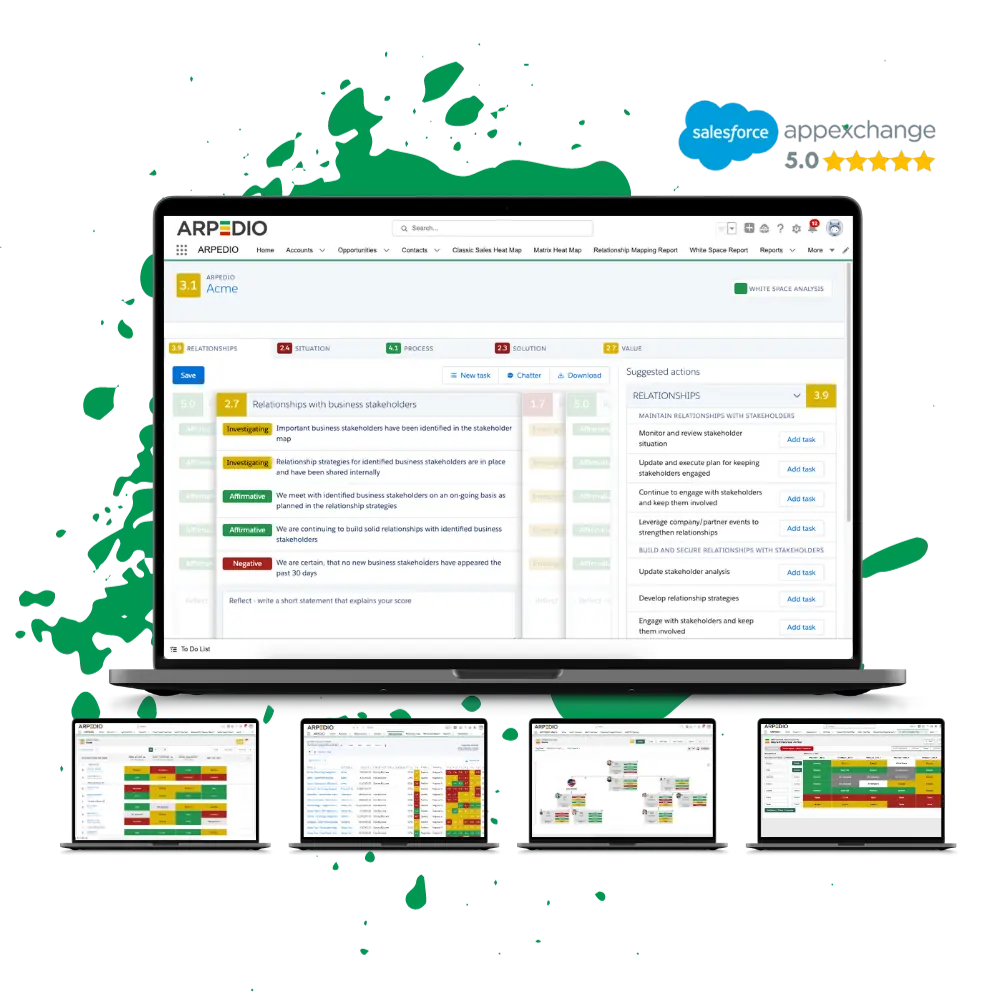Understanding Account Growth Strategy
In this section, we will take a closer look at the intricacies and purpose of account growth strategy. Understanding how to effectively implement this strategy is crucial for long-term success in maximizing your business growth and revenue.
Defining Account Growth Strategy
Account growth strategy refers to the systematic planning, execution, and management of approaches aimed at expanding your existing client base, increasing revenue, and improving customer satisfaction. It involves identifying opportunities for growth within your current accounts and developing strategies to capitalize on them.
The Components of Account Growth Strategy
An effective account growth strategy comprises several essential components designed to help you optimize client relationships and drive sustainable growth. These components include:
- Account Segmentation: Categorizing your client base into segments based on common characteristics, needs, and revenue potential.
- Customer Needs Assessment: Conducting a thorough evaluation of your clients’ needs and pain points to identify opportunities for tailored solutions.
- Opportunity Identification: Analyzing customer data and engagement metrics to uncover cross-selling and upselling opportunities within your accounts.
- Relationship Building: Fostering strong relationships with your clients through regular communication, personalized interactions, and exceptional customer service.
- Collaborative Planning: Working together with your clients to develop joint strategies and goals that align with their business objectives.
The Significance of a Well-Planned Strategy
A well-planned account growth strategy enables businesses to optimize their existing client base by nurturing relationships, expanding revenue streams, and increasing customer loyalty. It provides a roadmap for leveraging existing resources effectively and strategically, leading to sustainable business growth.
By understanding and implementing a comprehensive account growth strategy, businesses can unlock untapped potential within their client base, foster long-term partnerships, and position themselves for continued success in an ever-evolving marketplace.
Analyzing Existing Accounts
When it comes to driving growth, analyzing your existing accounts is a crucial step in developing a successful account growth strategy. By carefully examining your current client base, you can identify valuable insights and uncover opportunities to expand your business.
One effective technique for analyzing existing accounts is to delve into customer data. By gathering and evaluating information such as purchase history, preferences, and demographics, you can gain a deeper understanding of your clients’ needs and behavior patterns.
Assessing Client Needs
Another essential aspect of analyzing existing accounts is assessing client needs. By engaging in meaningful conversations with your clients, you can uncover their pain points and identify areas where your products or services can provide solutions. This knowledge enables you to tailor your offerings and enhance customer satisfaction.
Identifying cross-selling or upselling opportunities is yet another valuable outcome of analyzing existing accounts. By thoroughly analyzing customer data and understanding their needs, you can identify complementary products or services that can be cross-sold to existing clients. Similarly, you can uncover opportunities to upsell by identifying client preferences and aligning them with higher-value offerings.
By analyzing your existing accounts, you can gain valuable insights into your client base, their needs and preferences, and the opportunities for growth within. This knowledge empowers you to develop targeted strategies that will maximize your revenue and build stronger, long-lasting client relationships.
Creating a Customer-centric Approach
When it comes to account growth strategy, it is essential to prioritize creating a customer-centric approach. By understanding the needs, pain points, and preferences of your customers, you can tailor your strategies to deliver personalized solutions and exceptional experiences.
One of the key steps in creating a customer-centric approach is gaining a deep understanding of your customers’ pain points. By conducting thorough market research, surveys, and interviews, you can identify the challenges they face and the solutions they are seeking. This insight allows you to develop products, services, and support systems that directly address their needs.
Personalization is another vital aspect of a customer-centric approach. By customizing your offerings and interactions based on individual customer preferences, you can enhance their experience and build stronger relationships. This can include personalized recommendations, tailored communication, and exclusive offers.
Delivering exceptional customer experiences
Finally, delivering exceptional customer experiences is the cornerstone of a customer-centric approach. By consistently providing exceptional service, resolving issues promptly, and going above and beyond to meet customer expectations, you can create loyal advocates who are more likely to continue doing business with you and refer others to your brand.
Creating a customer-centric approach requires a shift in mindset and a commitment to putting customers at the heart of your business strategies. By understanding their pain points, developing personalized solutions, and delivering exceptional experiences, you can build long-lasting relationships and drive account growth.
Building Strong Client Relationships
In the realm of account growth strategy, building strong client relationships is a crucial factor contributing to long-term success. Cultivating meaningful connections with your clients not only enhances loyalty but also opens doors to new opportunities for business growth. Here, we delve into effective strategies that foster trust, engagement, and satisfaction, ensuring your clients remain dedicated partners on your growth journey.
The Power of Regular Communication
Regular communication acts as the foundation for building strong client relationships. By staying in touch with your clients, you demonstrate your commitment to their success and reinforce the value you bring to the partnership. Whether it’s through phone calls, emails, or face-to-face meetings, consistent communication ensures that you are present in their minds and allows you to address their evolving needs promptly.
Providing Value-Added Services
One way to establish yourself as a trusted partner is by providing value-added services that go beyond the core offerings. Offer your clients additional resources, expertise, or exclusive access to industry insights that can help them solve problems or achieve their goals. By demonstrating your commitment to their success, you not only strengthen the client relationship but also foster loyalty and establish a competitive edge.
Promptly Addressing Concerns
Swiftly addressing client concerns is vital for maintaining strong relationships. When clients encounter any issues or have questions, it is crucial to provide timely and effective solutions. By doing so, you demonstrate your commitment to their satisfaction and reinforce the trust they have placed in your partnership. Promptly addressing concerns helps prevent minor issues from escalating and showcases your dedication to their success.
Nurturing and strengthening client relationships is both an art and a science. By incorporating these strategies into your account growth strategy, you can create a strong foundation of trust, loyalty, and mutual growth. Remember, building strong client relationships is an ongoing process that requires consistent effort and attention, but the rewards in terms of client retention and business growth make it more than worthwhile.
Maximizing Revenue through Expansion
This section of the article explores various strategies for maximizing revenue through expansion within existing accounts. By identifying opportunities for growth and capitalizing on them, businesses can drive revenue growth effortlessly.
Introducing New Products or Services
A key approach to expansion is introducing new products or services to cater to the evolving needs of existing clients. By conducting market research and understanding customer preferences, businesses can develop innovative offerings that align with their target audience’s requirements.
Expanding into New Market Segments
Another avenue for revenue growth is expanding into new market segments within your existing client base. By identifying untapped areas of opportunity and tailoring your offerings to specific segments, businesses can capture additional market share and increase their revenue streams.
Leveraging Referrals from Satisfied Customers
Referrals from satisfied customers can be a powerful tool for revenue expansion. By providing exceptional products and services that exceed client expectations, businesses can encourage word-of-mouth referrals, leading to new business opportunities and increased revenue.
Implementing these expansion strategies not only helps maximize revenue but also strengthens client relationships by offering new, valuable solutions. By analyzing existing accounts, businesses can identify the most effective approach to expansion and capitalize on the untapped potential within their customer base.
Leveraging Technology for Growth
In today’s dynamic business landscape, technology serves as a cornerstone for implementing and refining strategies aimed at fostering account growth. By tapping into the potential of technology, companies can streamline operations and boost productivity, ultimately fueling expansion and optimizing revenue generation.
Among the array of technological solutions available, Customer Relationship Management (CRM) systems stand out as a pivotal tool. These platforms empower organizations to efficiently organize client data, monitor sales interactions, and cultivate leads across the entire customer journey. By integrating CRM systems into their operations, businesses can unlock invaluable insights into customer behaviors, preferences, and purchasing trends. Armed with this knowledge, they can customize offerings and communication approaches to resonate more effectively with their target audience.
Additionally, by incorporating ARPEDIO’s suite of solutions into their technological arsenal, businesses can further enhance their account planning and management capabilities. ARPEDIO offers tailored solutions designed to optimize various aspects of account growth strategies, providing businesses with the tools they need to stay ahead in today’s competitive market landscape.
The Preferred
Account-Based Selling Platform
Our platform provides visual org charts, stakeholder relationship heat maps, up-to-date account plans, recommended next-best actions, accurate weighted pipelines, and white space analysis.
-
100% Native to Salesforce
-
Methodology Agnostic
-
Advanced enough to create a real impact
-
Simple enough to secure adoption
Data Analytics for Informed Decision-Making
Another essential technology for growth is data analytics. By employing advanced analytics tools, businesses can extract valuable information from their data to make informed decisions about their account growth strategies. Data analytics enables companies to identify trends, uncover hidden opportunities, and optimize their sales and marketing efforts based on real-time insights. This data-driven approach ensures that businesses are focusing their resources on the most promising growth opportunities, allowing them to stay ahead of the competition.
Moreover, marketing automation tools can significantly enhance the efficiency of account growth strategies. These platforms enable businesses to automate various marketing activities, such as email campaigns, lead nurturing, and personalized communications. By automating these processes, businesses can save time and resources, while also delivering a seamless and personalized experience to their clients. This, in turn, strengthens customer relationships and drives growth.
Furthermore, technology provides businesses with the ability to gather and analyze customer feedback through surveys, reviews, and social media monitoring tools. By actively listening to the voice of the customer, businesses can identify areas for improvement, address customer pain points, and optimize their account growth strategies.
In conclusion, leveraging technology is essential for businesses looking to optimize their account growth strategies. By embracing CRM systems, data analytics, marketing automation, and other technological tools, companies can streamline processes, make data-driven decisions, and deliver exceptional customer experiences. By harnessing the power of technology, businesses can position themselves for sustained growth and success in today’s competitive landscape.
Conclusion
In conclusion, implementing effective account growth strategies is crucial for businesses looking to achieve long-term success. By focusing on relationship-building and revenue optimization, companies can maximize their potential for growth and profitability.
Throughout this article, we explored the importance of understanding account growth strategy and its various components. We discussed the significance of analyzing existing accounts, creating a customer-centric approach, and building strong client relationships.
Furthermore, we highlighted the opportunities for revenue generation through expansion within existing accounts and the role of technology in streamlining growth strategies.
By prioritizing these key insights and implementing them into your business practices, you can unlock the full potential of your client base, enhance customer experiences, and drive sustainable growth for your organization.













